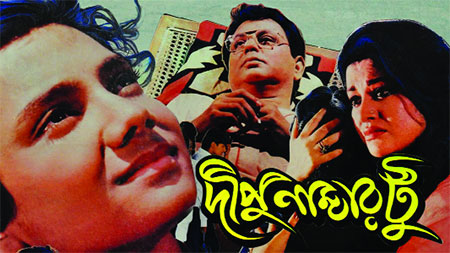Why so reluctant to make children’s films? Children’s films are now neglected in our country. Everyone in the society, starting from the creator, thinks that it is not an important job.
The Prime Minister directed to include the issue of making a children’s film one by one in the grant film. But later this issue was not emphasized anymore. Now the children’s film made in Dhaka is neglected.
Fazlul Haque, the editor of the monthly ‘Cinema’, took the initiative to make the first film for children and teenagers. He created ‘Sun of Pakistan’ based on the story of his wife Rabia Khatun.
After the independence of the country, Syed Salauddin Zaki produced the film ‘Ankur’ produced by the Film and Publication Department under the supervision of the Film Parliamentarian and Pune Film Institute. He later made another children’s film ‘Galpa Dadur Galpa Kotha’ produced by Shishu Academy.
Then in 1980 another filmmaker Badal Rahman made ‘Emil’s Intelligence Force’ with government grant. The film won the National Film and Bacchus Award for Best Picture and in various categories. Later, Khan Ataur Rahman also produced ‘Danpite Chele‘ in the production of Shishu Academy.
This film also won the National Film Award. After independence, when the government took the initiative to make children’s films, it was decided that one of the three government-funded films must be children’s films.

In the late seventies. Subhash Dutt made the children’s film ‘Fig Flower’ based on Ashraf Siddiqui’s story ‘The boy on the side of the street’. Later, Azizur Rahman’s ‘Uneducated’, ‘Holiday Hour’, CB Zaman’s ‘Prize’ children’s films also garnered various honors including national awards and praise from people of all walks of life.
In the seventies and eighties, children’s films were made in Bangladesh on a par with other countries in the Indian subcontinent.
Regrettably, our children’s filmmaking has come to a standstill since the nineties when the quality of Indian films has gradually increased to the point of competing with Hollywood. Although such a picture has been made in Kalevadra, its number is disappointing.
The country’s first children’s digital film ‘Durbin’ was made in 2009. Director Zafar Feroze won the Best Film Director award in the international category from the Mumbai Film Academy for the film, which was made in the light of Shirshendu Mukherjee’s novel Durbin.

Among Bangladeshi producers, Morshedul Islam has shown the most success in making children’s films. His productions ‘Dipu Number Two’ (1997), ‘Distance’ (2004) and ‘Amar Bandhu Rashed’ (2011), ‘Ankhi O Her Friends’ (2016) became very popular among children and teenagers.
Sadly, Bangladesh Shishu Academy, established in 1986, has so far produced only about 20 children’s films, both full-length and short-length. With the rapid development of information technology and the globalization of the whole world, naturally the high-tech children’s movies made in the developed world are now attracting a lot of children and parents.
An animated movie called “Montu Mia Expedition” was made in 2000. It is broadcast on Ekushey TV. Three episodes of it were built. Apart from this, there is no information about making any other children’s animation movie in Bangladesh. All in all, children’s films have been neglected in Dhaka for a long time.
Which is really frustrating. Renowned filmmaker Azizur Rahman said that children and teenagers must have their own world. They have their own style. Their films should be on the scale of their individuality. That is why children’s films deserve a special importance.

The impact of digital media in the techno age is undeniable. And that’s why talkative films are the most effective tool of the time in shaping a child’s mind. At one time comics and fairy tale books were the food of children’s fiction.
Hollywood continues to regularly present every favorite comic and fairy tale character of children on the digital screen. Children and teenagers are being attracted. Trade is also plentiful.
The director-producer does not have to think about investing in making children’s films. But the difference is going on in our country. Despite receiving government grants, in most cases, the production of such films remains elusive. Children’s films can now be said to be almost neglected here. Which is also sad.



